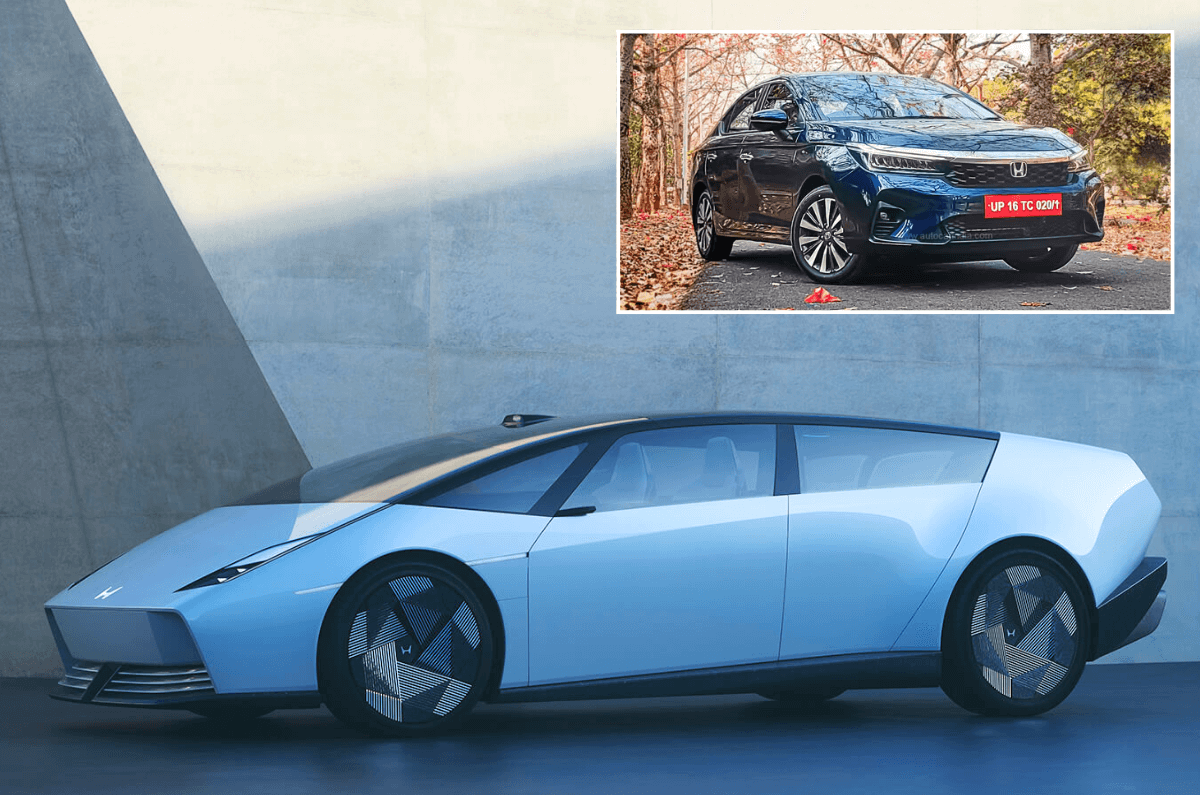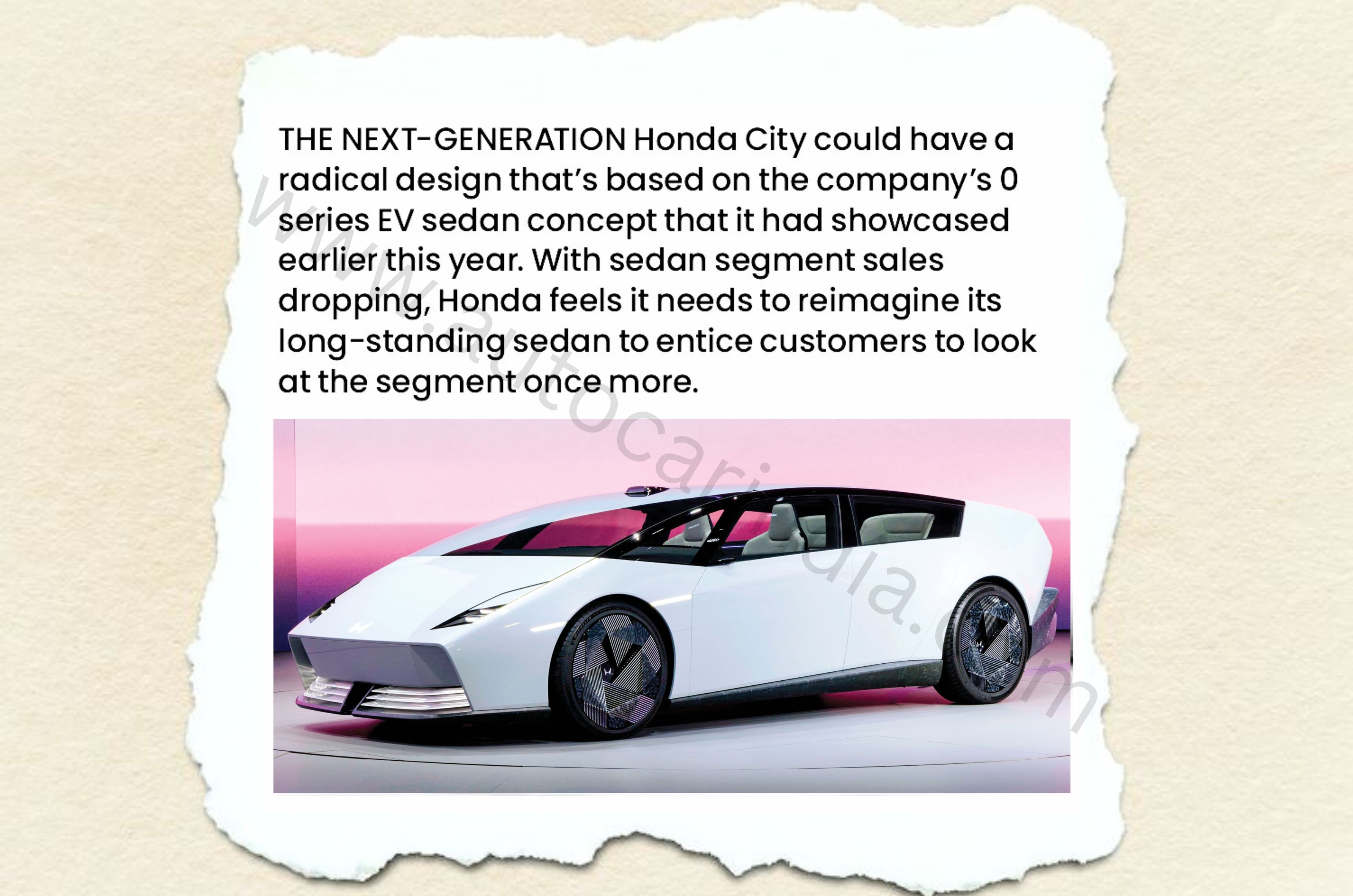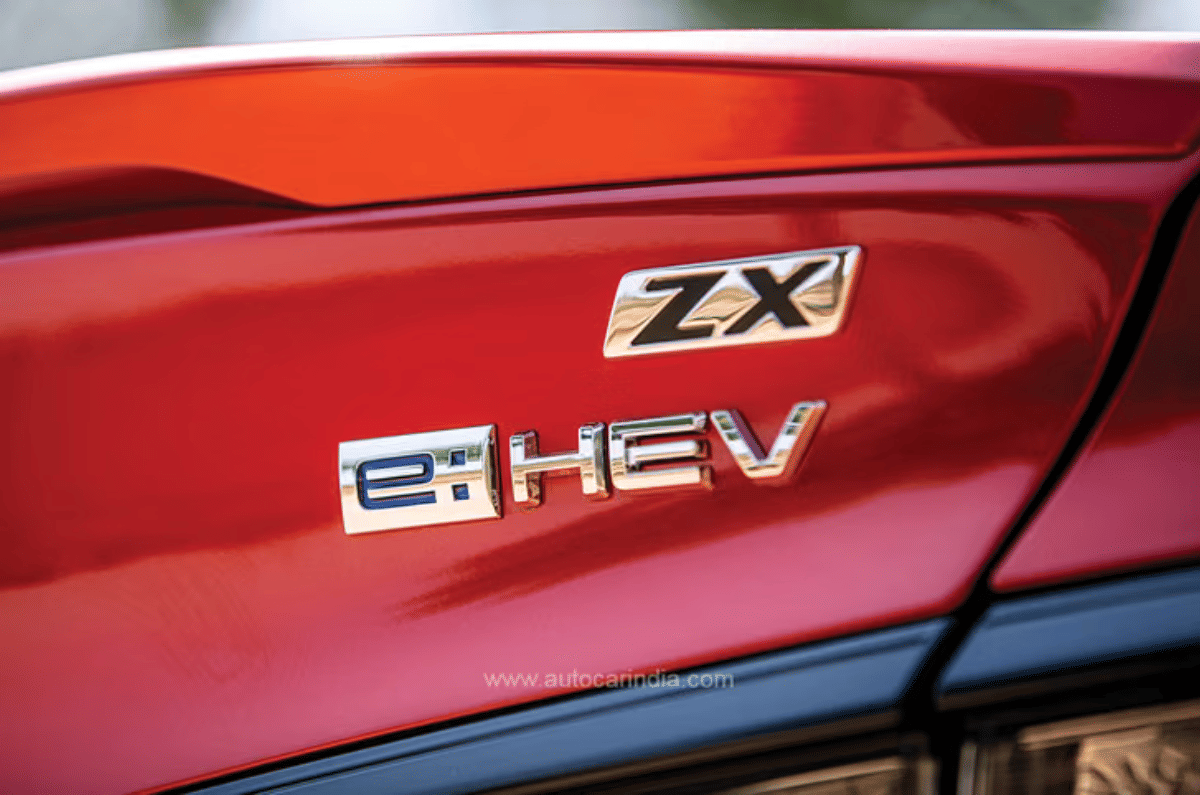
The sixth-generation Honda City, due in 2028, is set for its most dramatic design overhaul yet. Autocar India has learned that the new City could borrow styling cues from Honda’s radical 0 Series sedan concept, shown at the recent Japan Mobility Show. While the production version of the electric 0 Series sedan will sit at the top of Honda’s global EV portfolio, it previews a new design language that is expected to influence Honda sedans across the board – including India’s most recognisable one.
- 0 Series sedan concept was recently shown at the Japan Mobility Show
- Upcoming City may get a sportier front end, more athletic stance
- 2028 City will likely move to a new platform
For Honda India, the next-gen City comes at a crucial time. Once the undisputed benchmark among midsize sedans, the City has ceded ground in recent years to the Hyundai Verna and the more European-feeling Skoda Slavia and Volkswagen Virtus. A bolder, more sophisticated sixth generation is Honda’s opportunity to reclaim that leadership.
Next gen Honda City design
Sleeker front section, quarter glass ahead expected

We reported on the upcoming Honda City in the November 2025 issue of the Autocar India magazine.
According to industry sources who have viewed the early design mock-ups, the next-gen City carries clear visual links to the 0 Series sedan. Expect a sleeker, sportier front end and a more athletic stance. One of the more striking elements – and perhaps the biggest talking point – is the return of a front quarter glass inspired by the iconic Lamborghini Countach. However, unlike the 0 Series concept, ‘pop-up’ headlamps won’t make it to production due to modern safety norms.
Next gen Honda City platform
Expected to be underpinned by Honda’s PF2 base
Under the skin, the next-generation City is expected to shift to Honda’s new PF2 modular architecture, engineered for small and midsize cars and SUVs, and, crucially, for hybridisation. The midsize hybrid platform Honda showcased recently is widely believed to be PF2.
Despite offering higher body rigidity, PF2 is around 90kg lighter than Honda’s current hybrid base – a significant weight saving that should boost efficiency and enhance the “joy of driving” that Honda is keen to preserve in its future models. More than 60 percent of components will be shared across vehicles derived from PF2, helping streamline production and keeping costs competitive.
Sources indicate the multi-energy platform allows faster battery charging, stronger energy regeneration and the adoption of smaller, more cost-effective battery packs – key to making hybrids more affordable.
Next gen Honda City engine details
Hybrid to finally become mainstream for City

Representative image.
The current City e:HEV is praised for its efficiency but criticised for its steep pricing. The next-gen model is expected to fix that. Thanks to localisation and parts optimisation, Honda will finally be able to offer a hybrid City that is priced within reach of a larger audience – an important step ahead of the stringent CAFE 3 norms kicking in from 2027.
Honda is expected to offer the City with both petrol and hybrid powertrains. While specifics remain under wraps, the reference point is today’s model: a 121hp, 1.5-litre naturally aspirated petrol engine paired with a 6-speed manual or CVT, and the 1.5-litre Atkinson-cycle hybrid that uses two electric motors to deliver a combined 126hp via an e-CVT. With fuel prices high, CAFE standards tightening and hybrid demand rising, Honda’s timing for the new City couldn’t be more critical.
City is Honda’s longest-running nameplate in India
Launched in 1998, the City is Honda’s longest-running nameplate in India – in fact, the longest-running mass-market nameplate in the country. Across its first three generations, the City reinvented itself dramatically each time, whether through radical design, class-leading efficiency or performance. In comparison, the fourth and fifth generations played it safe, focusing on space, efficiency and bulletproof reliability. The 1.5 i-VTEC remains the gold standard for naturally aspirated engines even today, but with turbocharged TSI rivals from Skoda and Volkswagen and the Verna’s tech-rich cabin, competition is fiercer than ever.
Honda knows the City needs to be shaken up – and the next-gen model aims to do exactly that. Sales numbers underline the urgency: SIAM data shows Honda sold just 578 units of the City in October 2025, down from 1,004 units a year earlier, a drop of over 42 percent.
With inputs from Uday Singh

